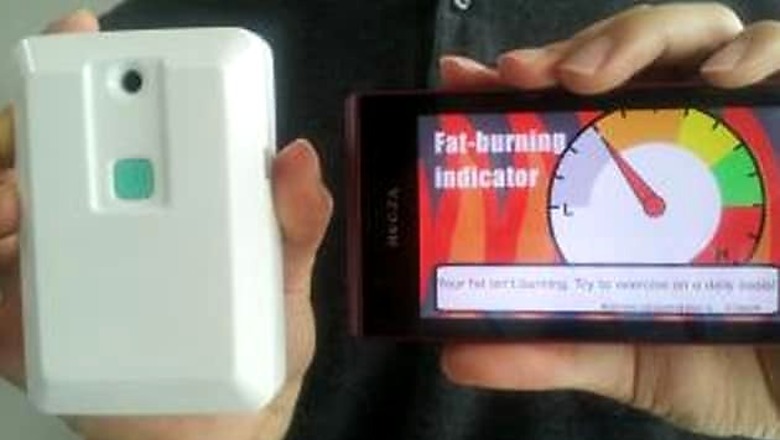
views
Tokyo: Fitness freaks can now gauge if their hard work is paying off without the need for weighing scales - thanks to a new device that can instantly tell how much fat your body is burning.
Japanese scientists developed the pocket-sized portable sensor that provides a readout of how much fat a person burns while exercising.
The device works by measuring increased levels of acetone on the breath a good indicator of when the body has begun to break down fat.
Acetone is primarily produced in the blood when fat is broken down; however, it is also expelled through tiny sacs, called alveoli, in the lungs during exhalation and is therefore present in exhaled breath.
This new device, which is capable of detecting acetone concentrations in the range of 0.2 to 50 parts-per-million, is just 10 cm long, weighs 125 g and requires two batteries to
operate.
Developed by a group of researchers from NTT DOCOMO Research Laboratories, the device consists of a pressure sensor to detect the exhaled breath and two types of semiconductor-based gas sensors to detect acetone.
After a user blows into the device, the acetone concentration levels can be calculated and sent to a smartphone, either by Bluetooth or a cable, within 10 seconds.
Researchers recruited 17 healthy adult volunteers (11 men and six women), whose body mass indexes (BMIs) were above the Japanese standard, to test the device.
The volunteers were split into three groups, the first of which carried on with their normal life and were not restricted to a specific numbers of calories in their diet and not required to take part in exercise.
The second group were required to take part in light exercise, such as jogging or fast walking, for 30-60 minutes a day and the final group were required to take part in the same exercise routine and also consume a limited number of calories in their diet each day.
The experiment lasted 14 days and on each day before breakfast, the volunteers were required to measure their body weight, body fat percentage and breath acetone concentrations using the portable device and a standard instrument for comparison.
Results showed that the volunteers in the first two groups those leading a normal life and those performing daily exercise were not able to lose significant amounts of fat. Their breath acetone concentrations also remained constant.
The volunteers in the third group who followed the exercise regime and had their calorific intake restricted were able to lose significant amounts of fat and their breath acetone concentrations were increased significantly. The study was published in IOP Publishing's Journal of Breath Research.


















Comments
0 comment